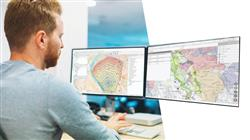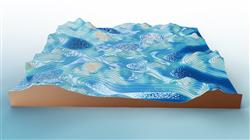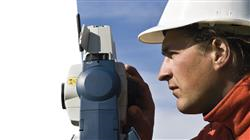University certificate
The world's largest faculty of engineering”
Introduction to the Program
Incorporate the latest IT tools into your work, so that you can analyze and present your measurement results in the best possible way”

Information Technology is an essential tool for geomatics. It provides you with numerous digital solutions to process and display the different data collected during any surveying process. However, it is advancing rapidly, and every year, new methods and software emerge that facilitate the surveyor’s task, making it more accurate. For this reason, professionals dedicated to this field must be aware of new innovations in order to be able to incorporate them into their daily work.
Therefore, this Postgraduate diploma in Information Technology for Geomatics offers the latest developments in issues such as Apache web server management, its supported programming languages such as PHP, Pearl and Ruby, Nginx and Tomcat web servers, GeoServer, Grass GIS, OpenJump, backend programming in GIS or programming in R and JavaScript for geographic information systems, among many others.
All this, following an innovative 100% online teaching system that allows students to balance their career with their studies, since the program adapts to their personal circumstances. In addition, you will have access to the best multimedia content such as practical exercises, video procedures, master classes or interactive summaries. Likewise, the student will be guided by the best teaching staff in this specialty, composed of real experts who know all the latest computer developments in the field of geomatics.
Gain in-depth knowledge in the management of servers such as Apache, Nginx or Tomcat applied to geomatics with this Postgraduate diploma”
This Postgraduate diploma in Information Technology for Geomatics contains the most complete and up-to-date program on the market. The most important features include:
- Practical cases presented by experts in Information Technology in Geomatics
- The graphic, schematic, and practical contents with which they are created, provide scientific and practical information on the disciplines that are essential for professional practice
- Practical exercises where the self-assessment process can be carried out to improve learning
- Special emphasis on innovative methodologies
- Theoretical lessons, questions to the expert, debate forums on controversial topics, and individual reflection assignments
- Access to content from any fixed or portable device with an Internet connection
Geomatics is continuously transforming. This program gives you the opportunity to update your knowledge by addressing the latest innovations in Information Technology for Geomatics”
The program’s teaching staff includes professionals from the sector who contribute their work experience to this training; as well as renowned specialists from leading societies and prestigious universities.
Thanks to multimedia content developed with the latest educational technology, you will be immersed in situated and contextual learning. In other words, a simulated environment that will provide immersive learning, programmed to train for real situations.
This program is designed around Problem-Based Learning, whereby the professional must try to solve the different professional practice situations that arise throughout the program. For this purpose, the student will be assisted by an innovative interactive video system created by renowned and experienced experts.
This program will help you to learn the best applications of programming languages such as Pearl, R or JavaScript focused on this discipline"

Decide how, when and where to study thanks to the 100% online methodology with which this Postgraduate diploma is taught"
Syllabus

You won’t find content more innovative than this on programming for geomatics”
Module 1. Backend for GIS
1.1. Apache Web Server
1.1.1. Apache Web Server
1.1.2. Installation
1.1.3. Anatomy of the Apache Server
1.1.3.1. Standard Content Folders
1.1.3.2. Logs
1.1.4. Settings
1.1.5. Support Programming Languages
1.1.5.1. Php
1.1.5.2. Perl
1.1.5.3. Ruby
1.1.5.4. Others
1.2. Nginx Web Server
1.2.1. Nginx Web Server
1.2.2. Installation
1.2.3. Features
1.3. Tomcat Web Server
1.3.1. Tomcat Web Server
1.3.2. Installation
1.3.3. Maven Plugin
1.3.4. Connectors
1.4. GeoServer
1.4.1. GeoServer
1.4.2. Installation
1.4.3. Using the ImageMosiac Plugin
1.5. MapServer
1.5.1. MapServer
1.5.2. Installation
1.5.3. Mapfile
1.5.4. MapScript
1.5.5. MapCache
1.6. Deegree
1.6.1. Deegree
1.6.2. Characteristics of Deegree
1.6.3. Installation
1.6.4. Settings
1.6.5. Use
1.7. QGIS Server
1.7.1. QGIS Server
1.7.2. Installation in Ubuntu
1.7.3. Capabilities
1.7.4. Settings
1.7.5. Use
1.8. PostgreSQL
1.8.1. PostgreSQL
1.8.2. Installation
1.8.3. Posgis
1.8.4. PgAdmin
1.9. SQLite
1.9.1. SQLite
1.9.2. Spatialite
1.9.3. Spatialite-gui
1.9.4. Spatialite-tools
1.9.4.1. General Tools
1.9.4.2. OSM Tools
1.9.4.3. XML Tools
1.9.4.4. VirtualPG
1.10. MySQL
1.10.1. MySQL
1.10.2. Spatial Data Types
1.10.3. phpMyAdmin
Module 2. Clients for GIS
2.1. Grass GIS
2.1.1. Grass GIS
2.1.2. Components of the Graphic Interface
2.1.3. Commands of the Graphic Interface
2.1.4. Processing
2.2. Kosmo Desktop
2.2.1. osmo Desktop
2.2.2. Installation
2.2.3. Features
2.3. OpenJump
2.3.1. OpenJump
2.3.2. Installation
2.3.3. Plugins
2.4. QGIS
2.4.1. QGIS
2.4.2. Installation
2.4.3. Orfeo Toolbox
2.5. Tile Mill
2.5.1. Tile Mill
2.5.2. Installation
2.5.3. Map Creation from a CSV
2.6. gvSIG
2.6.1. gvSIG
2.6.2. Installation
2.6.3. Case Uses
2.6.4. Scripts Repository
2.7. uDig
2.7.1. uDig
2.7.2. Installation
2.7.3. Features
2.7.4. Use
2.8. Leaflet
2.8.1. Leaflet
2.8.2. Installation
2.8.3. Plugins
2.9. Mapbender
2.9.1. Mapbender
2.9.2. Features
2.9.3. Installation
2.9.4. Settings
2.9.5. Use
2.10. OpenLayers
2.10.1. OpenLayers
2.10.2. Features
2.10.3. Installation
Module 3. Programming for Geomatics
3.1. Programming for Backend in GIS. PHP Installation and Configuration
3.1.1. Programming for Backend in GIS
3.1.2. PHP Installation
3.1.3. Configuration: The php.ini File
3.2. Programming for Backend in GIS. Syntax and Control Structures in PHP
3.2.1. Syntax
3.2.2. Types of Data
3.2.3. Control Structures
3.2.3.1. Simple Selection Structures
3.2.3.2. Iteration Structures - While
3.2.3.3. Intervention Structures - For
3.2.4. Functions
3.3. Programming for Backend in GIS. Database and PHP Connections
3.3.1. Connections for MySQL Database
3.3.2. Connections for PosgreSQL Database
3.3.3. Connections for SQLite Database
3.4. Programming in Python for GIS. Installation, Syntax and Functions
3.4.1. Programming in Python for GIS
3.4.2. Installation
3.4.3. Variables:
3.4.4. Expressions and Operators
3.4.5. Functions
3.4.6. Working with Strings
3.4.6.1. Formatting Strings
3.4.6.2. Arguments
3.4.6.3. Common Expressions
3.5. Programming in Python for GIS. Control Structures and Error Treatment
3.5.1. Simple Selection Structures
3.5.2. Iteration Structures - While
3.5.3. Intervention Structures - For
3.5.4. Error Treatment
3.6. Programming in Python for GIS. Access to Databases
3.6.1. MySQL Database Access
3.6.2. PostgreSQL Database Access
3.6.3. SQLite Access to Databases
3.7. Programming in R for GIS. Installation and Basic Syntax
3.7.1. Programming in R for GIS
3.7.2. Packet Installation
3.7.3. Basic R Syntax
3.8. Programming in R for GIS. Control Structures and Functions
3.8.1. Simple Selection Structures
3.8.2. Loops
3.8.3. Functions
3.8.4. Types of Data
3.8.4.1. Lists
3.8.4.2. Vectors
3.8.4.3. Factors
3.8.4.4. Dataframes
3.9. Programming in R for GIS. Access to Databases
3.9.1. Connection to Mysql with Rstudio
3.9.2. Integrating PostgreSQL - PostGIS in R
3.9.3. Use of JDBC in R
3.10. Programming in JavaScript for GIS
3.10.1. Programming in JavaScript for GIS
3.10.2. Features
3.10.3. NodeJS

The best content, presented through the best teaching methodology on the educational market”
Postgraduate Diploma in Photogrammetry with Drones
.
Geomatics is a science that combines geography, cartography and computer science for obtaining, processing and analyzing geospatial data. Currently, this discipline is constantly evolving and has a great impact on planning, decision making and land management. If you want to acquire the necessary knowledge to work in this sector, you have come to the right place. At TECH Global University you will find the Postgraduate Diploma in Photogrammetry with Drones that will help you to achieve this purpose, in an agile and efficient way. In this program, taught in online mode, we will provide you with the necessary knowledge to handle the computer tools used in the management and analysis of geospatial data. Here, you will learn to handle specialized programs in cartography, Geographic Information Systems (GIS), Global Positioning Systems (GPS) and remote sensing.
Develop your computer skills for geomatics
.
The main objective of this program is to provide you with comprehensive training, allowing you to develop professional skills and competencies in the geomatics sector. Therefore, our program is designed by professionals in the sector, with extensive experience in the management and analysis of geospatial data. In addition, our e-learning model will allow you to access the program content from anywhere and at any time, adapting to your needs and schedules. With TECH, you will have the opportunity to learn one of today's most important disciplines, acquiring professional skills and specialized knowledge that will allow you to stand out in the job market. Upon graduation, you will be an expert in using programming tools, in order to create your own applications and solutions to specific problems in the sector.







